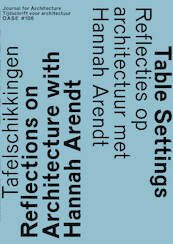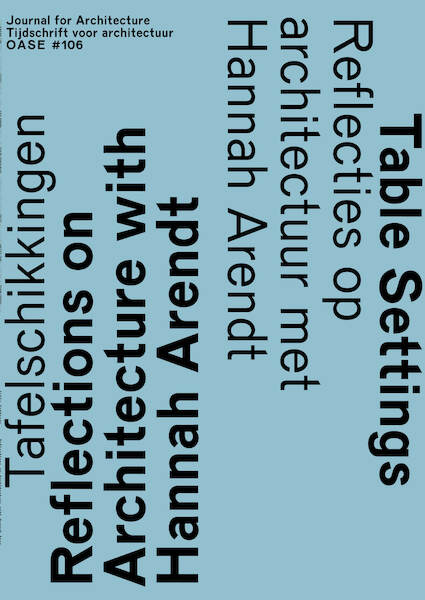| Prijs | € 14,95 |
Adobe PDF met digitaal watermerk | Juli 2020 |
Beoordeel dit boek als eerste!Beschrijving
Specificaties
- Uitgever
- nai010 uitgevers/publishers
- ISBN
- 9789462085640
- Formaat
- Adobe PDF met digitaal watermerk
- Publicatiedatum
- Juli 2020
- Bestandsgrootte
- 6385147 bytes
- Taal
- Meerdere talen
- Aantal Pagina's
- 128
Beschrijving
For Dutch see below. —ENGLISH— The German-American philosopher Hannah Arendt (1906-1975) once stated that spatial thinking is 'political' thinking, as it is concerned about the world and its inhabitants. We certainly can understand spatial thinking here as architectural thinking: the ‘world’ for Arendt meant the ways in which we make the globe habitable for people: how we build houses and cities, infrastructures and other networks, and furnish spaces with tables, chairs, paintings and photographs. According to Arendt, this world-of-things was crucial for political life: it is this world that simultaneously connects people and separates them, just like a table organises the people (and the conversation) around it. This OASE examines architecture - design, building, built environment - from this perspective. The issue opens with an introduction to Arendt's political thinking, and how it is connected to the (production of) the world. Next, a variety of architects, including George Baird, Patrick Bouchain, Pier Vittorio Aureli, and Mary Duggan, will have the floor to examine their daily practice from Arendt's perspective. —NEDERLANDS— De Duits-Amerikaanse filosofe Hannah Arendt (1906-1975) stelde eens dat ruimtelijk denken ‘politiek’ denken is: het heeft als kern dat het betrokken is op de wereld en haar inwoners. Nu kunnen we ruimtelijk denken hier ook zien als architectonisch denken. Het ging haar om de wereld zoals we die voor de mens bewoonbaar maken: hoe we huizen bouwen, en steden, infrastructuur en andere netwerken, ruimtes inrichten met tafels, stoelen, schilderijen en foto’s. Die wereld-van-dingen was volgens Arendt cruciaal voor het politieke leven: het is deze wereld die mensen tegelijkertijd met elkaar verbindt en uit elkaar houdt, zoals een tafel de mensen (en het gesprek) er omheen organiseert. Deze OASE onderzoekt architectuur - ontwerpen, bouwen, gebouwde omgeving - vanuit dit perspectief. Het nummer opent met een inleiding in Arendt’s politieke denken, en hoe dit verbonden is met de (productie van) de wereld. Vervolgens is het woord aan een uiteenlopende reeks architecten, waaronder George Baird, Patrick Bouchain, Pier Vittorio Aureli, en Mary Duggan, die hun dagelijkse praktijk onderzoeken aan de hand van Arendt’s perspectief.
Schrijf een recensie
Specificaties
- Uitgever
- nai010 uitgevers/publishers
- ISBN
- 9789462085640
- Formaat
- Adobe PDF met digitaal watermerk
- Publicatiedatum
- Juli 2020
- Bestandsgrootte
- 6385147 bytes Kb
- Taal
- Meerdere talen
- Aantal Pagina's
- 128









